July 22, 2025
How Hawai‘i’s Youth Advocates are Fighting for Hawai‘i’s Future
As the climate crisis threatens their land, food, and traditions, 14 youth advocates took the Hawaiʻi Department of Transportation to court to spur climate action.
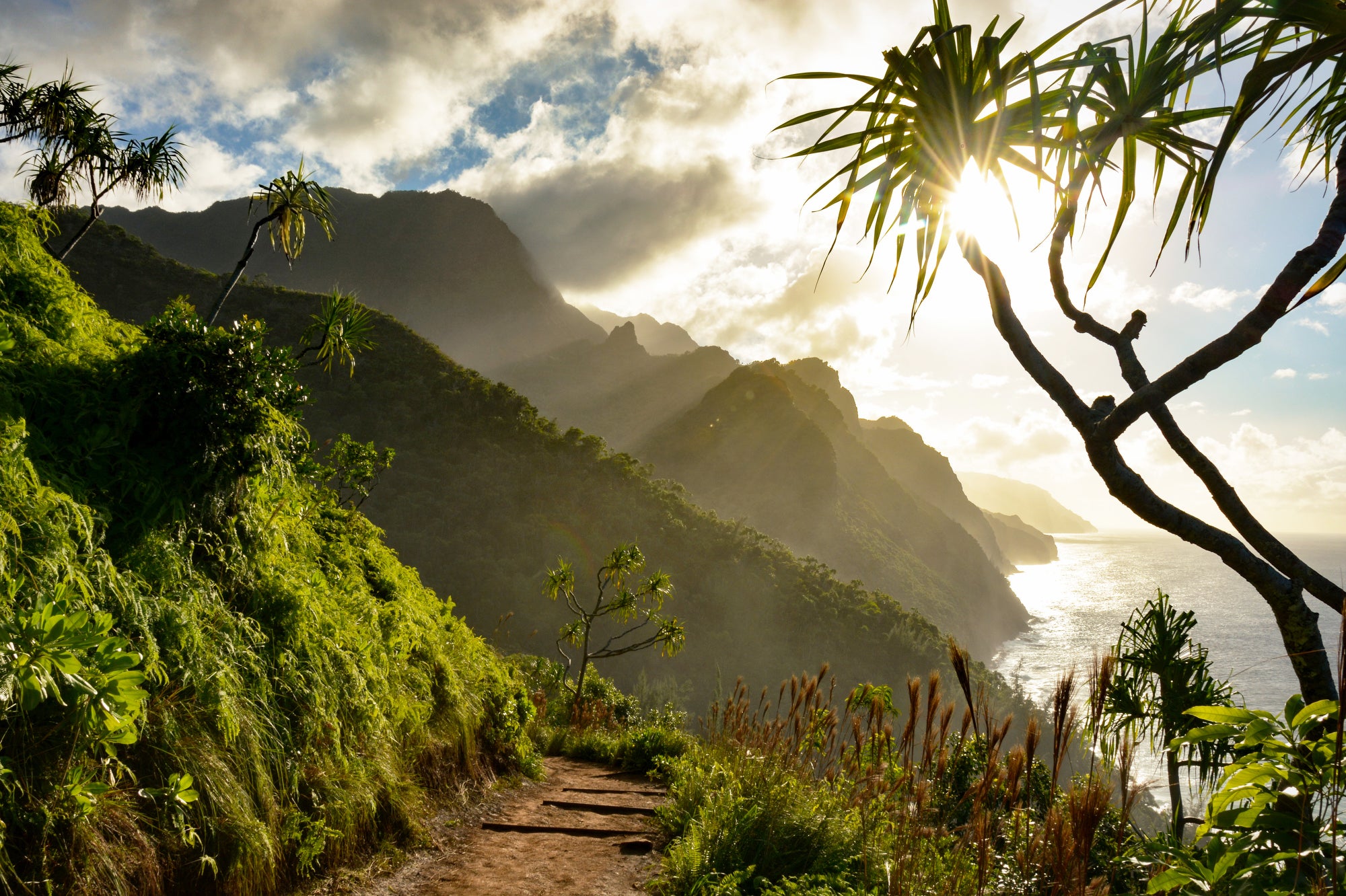
Known as one of the earliest adopters of ambitious clean energy goals in the U.S., the Hawaiian Islands would appear a leader in the fight to tackle the climate crisis.
But inaction by key Hawaiʻi agencies means that greenhouse gas emissions are still rising, and that by 2045, emissions will only be 30% lower than they were in 2016.
Climate change poses one of the greatest threats to the Hawaiian Islands’ world-famous natural environment. It also threatens its unique Native Hawaiian culture, which has endured for over one thousand years withstanding existential threats like European colonization and the islands’ annexation to the U.S.
Feeling the urgency of the climate crisis, 14 Hawaiʻi youth advocates sued the Hawaiʻi Department of Transportation in 2022 to spur change and defend their constitutional right to a clean and healthful environment. Some of the plaintiffs live on Maui, and their families are supporting community efforts to recover from deadly climate-fueled wildfires.
As the case was set to go to trial, the youth plaintiffs joined with HDOT Director Edwin Sniffen and Gov. Josh Green to announce an historic, groundbreaking settlement agreement on Jun. 20, 2024, recognizing the youths’ constitutional rights to a life-sustaining climate and mobilizing HDOT to plan and implement transformative changes to Hawaiʻi’s transportation system to achieve the state’s legally established goal of net-negative emissions by 2045.
“I am so proud of all the hard work to get us to this historic moment. We got what we came for, and we got it faster than we expected,” said Navahine F., one of the youth plaintiffs. “Mai kuhihewa young people have the power to make a difference for their futures.”

The settlement set forth a framework that offers a replicable model for decarbonizing transportation systems around the U.S., and the world.
It was also the first settlement agreement of its kind, in which government defendants have decided to resolve a constitutional climate case in partnership with youth plaintiffs, committing to comprehensive changes.
“I hope our case inspires youth to always use their voices to hold leaders accountable for the future they will inherit,” said plaintiff Rylee Brooke K. The suit was part of a growing international movement of youth climate action in the courts, including a successful lawsuit in Montana.
In the first year following the settlement, HDOT made significant progress, including launching the Youth Transportation Council and releasing the “Hawaiʻi Energy Security and Waste Reduction Plan” — a wide range of strategies to help Hawaiʻi achieve its zero-emissions transportation goals by 2045 — for public comment.
“This is a great opportunity for more people to get involved in this process, especially young people who want to protect their future,” said Kaliko T., a Lahaina resident and plaintiff in the Navahine lawsuit, who lost two homes to natural disasters that were made worse by climate change.
“It is all of our kuleana to participate now so this plan will be stronger over the next 20 years. This investment in our future is worth it because nobody should have to go through what I’ve been through.”
Youth plaintiffs gather before the start of the Navahine F. v. the Hawaiʻi Department of Transportation hearing at the First Circuit Environmental Court in Honolulu, Hawaiʻi, on January 26, 2023. Pictured left to right: Kaʻōnohi P.-G., 16, KawahineʻIlikea N., 13, Taliya N., 15, Navahine F., 15, Mesina D.-R., 15, Kalā W., 19, Rylee K., 15, and Kawena F., 10. (Elyse Butler for Earthjustice)
Elyse Butler for Earthjustice
Kalā W.
Youth Plaintiff
Kalā W. is a 19-year-old with roots on both the islands of Kauaʻi and Oʻahu.
In April 2018, she and her family experienced one of Hawaiʻi’s recent extreme weather events. Their home is on Kauaʻi’s North Shore, where communities received nearly 50 inches of rain within 24 hours.

The deluge produced some of the most devastating flooding conditions in Hawaiʻi’s recorded history.
This climate change-induced “rain bomb” destroyed homes, flooded loʻi farmed for local subsistence, and cut off road-based access into and out of Kalā’s community for several weeks.
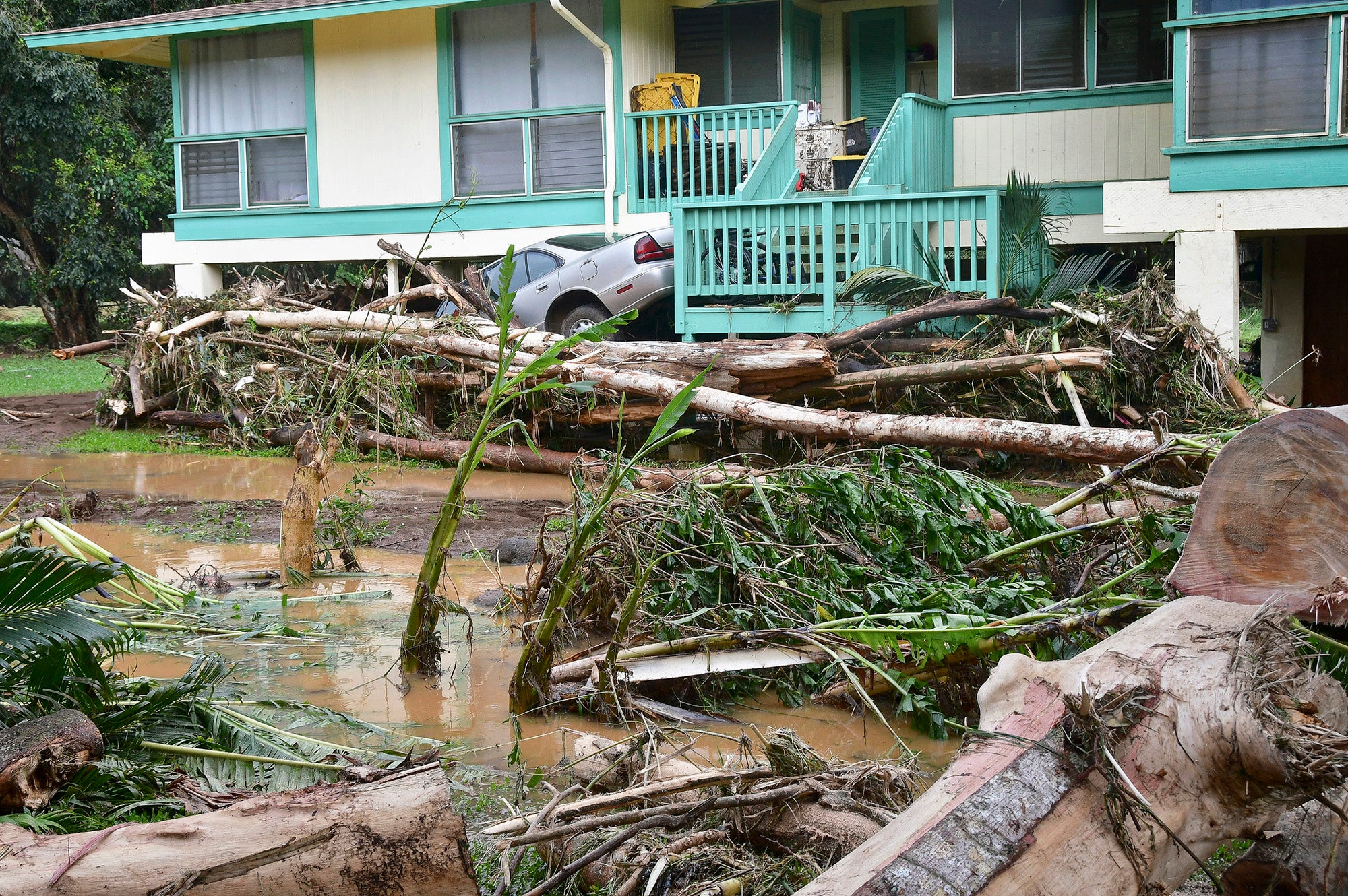
After the flood, Kalā helped remove debris to restore Limahuli stream — the main water source for her community.
She has also advocated for rules implementing the Hāʻena Community-Based Subsistence Fishing Area in order to manage the Hāʻena fishery for subsistence purposes.
These rules are based upon traditional and customary place-based knowledge of the area’s natural resources to preserve it in the public trust.
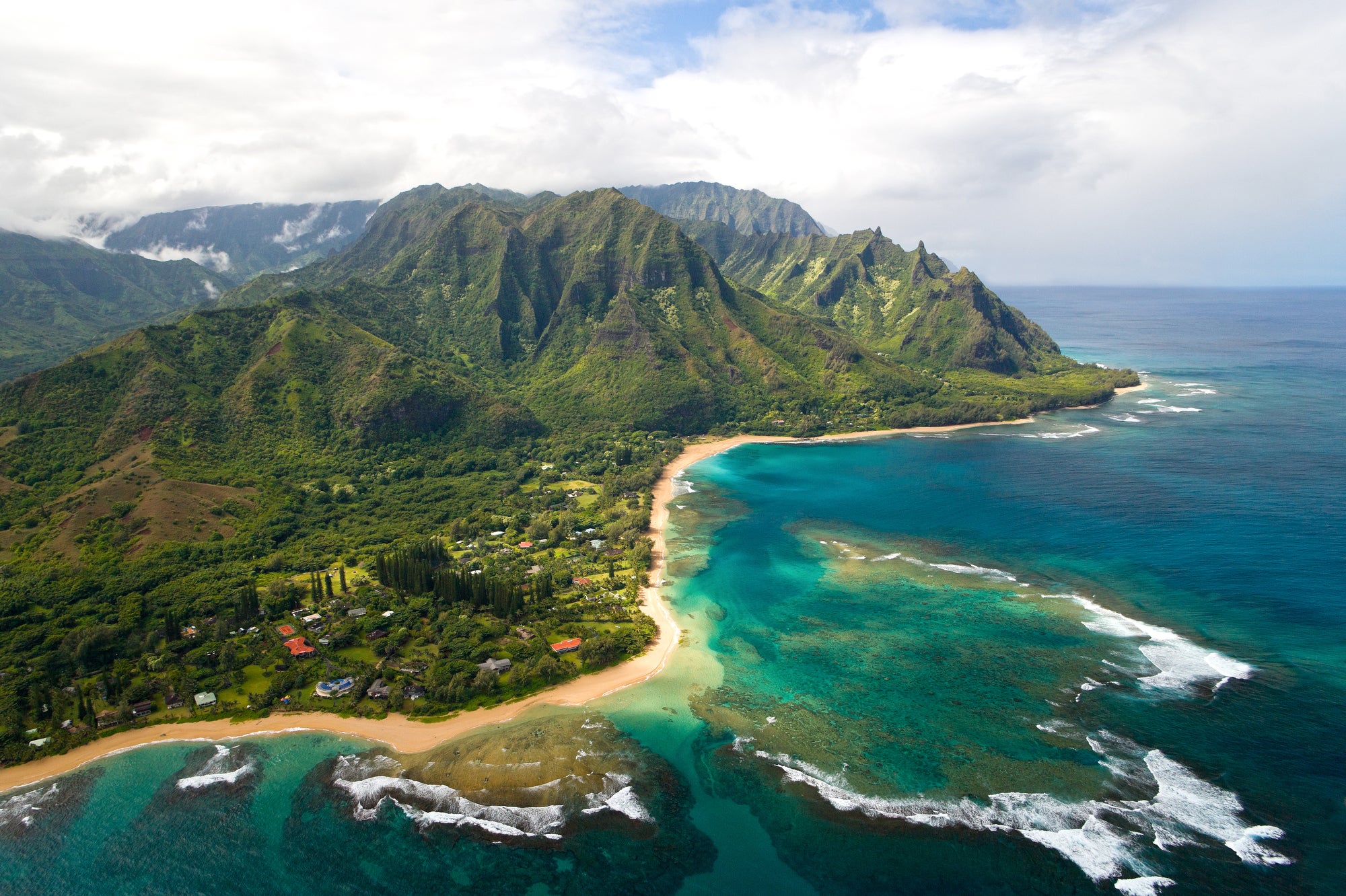
Hawaiʻi’s public trust doctrine is rooted in the ancient kānāwai (law) of pre-contact Hawaiʻi.
Since time immemorial Native Hawaiians have lived by the mandate to manage freshwater resources for the collective benefit of people and nature.

Many traditional Native Hawaiian land use practices, like kalo farming, depend on this fundamental principle.
Hawaiʻi’s constitution mandates the state government to “conserve and protect Hawaiʻi’s natural beauty and all natural resources.” The constitution also establishes that “[e]ach person has the right to a clean and healthful environment.”
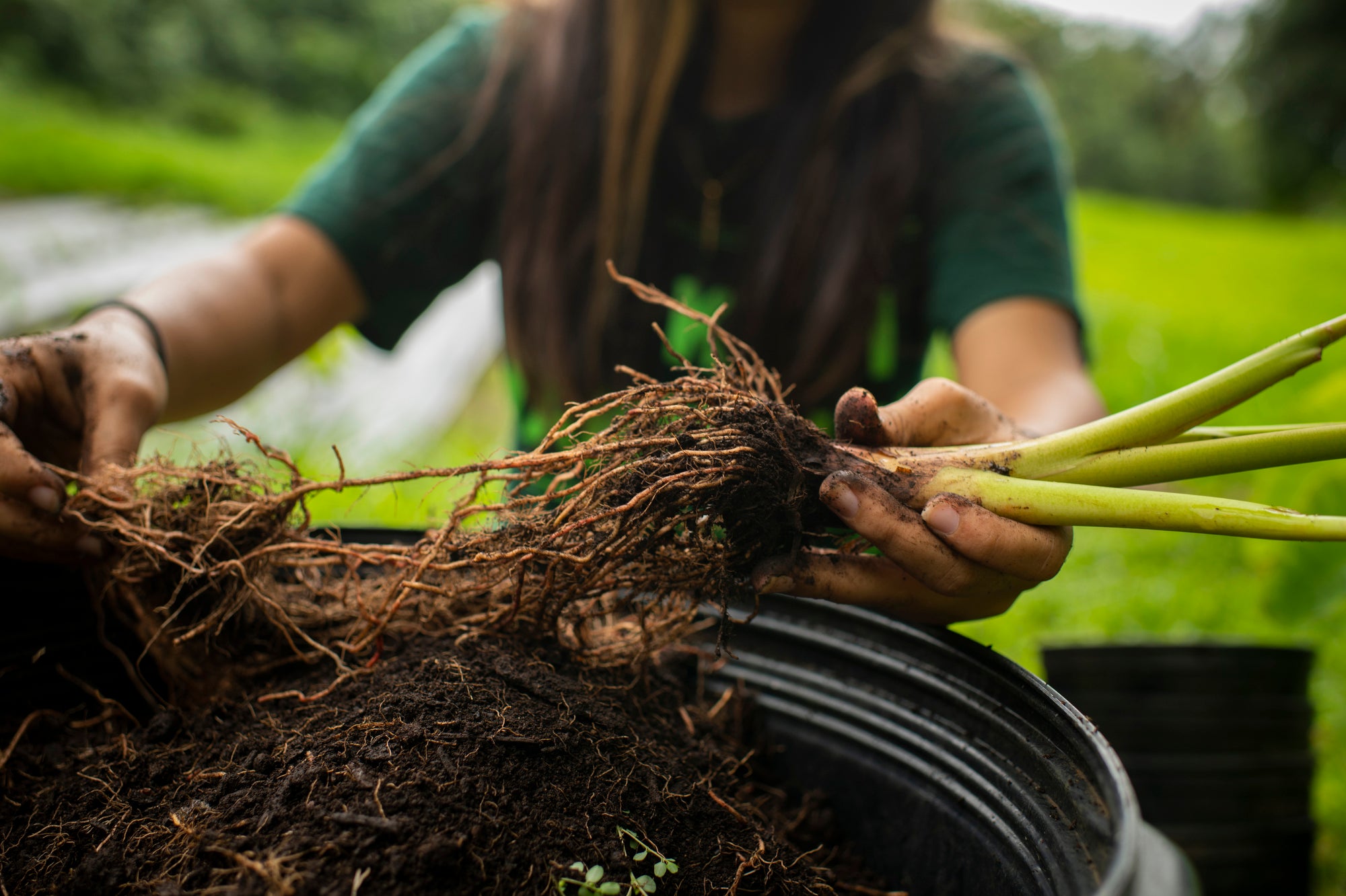
Kawena F.
Youth Plaintiff
Kawena F., aged 10, lives on Hawaiʻi Island with her parents and four younger siblings, and she is also learning traditional farming practices on her family’s taro patches.
Kawena’s family maintains a traditional Hawaiian diet, preparing traditional Hawaiian foods with produce from their land, and grows sweet potato, ginger, and ʻōlena (turmeric). Passing on traditional farming and cooking practices to Kawena and her siblings is important to this ʻohana (family).
But like Navahine’s ʻohana, long periods of drought and shifting growing seasons caused by climate change threaten Kawena’s food security and the viability of kalo farming across the islands.

Rising sea levels present another threat. As they infiltrate Hawaiʻi’s groundwater, the rising acidity of the soil further reduces kalo yields and threatens other native vegetation.
Some of Navahine’s family’s loʻi kalo (taro patches) sit only six inches above sea level. These lands will be underwater within her lifetime if drastic and immediate climate action is not taken.
As the most isolated island chain in the world, the encroaching Pacific threatening to swallow coastal resources looms large for many of the youth represented in this case.

Kaʻōnohi P.-G.
Youth Plaintiff
Sea levels have started to inundate and destroy important cultural sites in Hawaiʻi, including at Kawa, Kaʻū where Kaʻōnohi gathers paʻakai (salt).
Kaʻōnohi P.-G., a 16-year-old who lives in Puna, Hawaiʻi, deeply feels the loss of connection to his culture, traditions, and the place-based stories of his ancestors.
Kaʻōnohi grew up fishing and paddling in Hawaiʻi’s coastal waters. As sea levels continue to rise, Kaʻōnohi can also no longer launch his canoe from many places along the coast because the beaches have eroded and the water is too high.
Elyse Butler for Earthjustice
Higher tides are also washing out traditional burial sites along the coast, exposing and scattering ʻiwi kūpuna (ancestral bones) laid to rest in the sands.
ʻIwi, cherished in traditional Hawaiian culture as the repository of a person’s mana (or spiritual energy) after death, are revered and respected by Hawaiʻi’s cultural practitioners like Navahine, Kawena, and Kaʻōnohi.
The disturbance of ʻiwi by rising sea levels inflicts emotional harm as would any other act of desecration against one’s ancestors.

Emissions from the transportation sector are a dominant and increasing contributor to Hawaiʻi’s greenhouse gas emissions, expected to make up nearly 60% of Hawaiʻi’s total emissions by 2030.
Hawaiʻi’s Department of Transportation (HDOT) has continued to promote, fund, and implement transportation projects that lock in and escalate the use of fossil fuels, rather than projects that mitigate and reduce emissions.
HDOT has consistently prioritized infrastructure projects such as highway construction and expansion. These increase the miles traveled by cars rather than projects that enable multi-modal travel by foot, bicycle, bus, and other forms of transit that prioritize alternative fuels.
HDOT has also not cooperated or coordinated with other agencies tasked with meeting the state’s greenhouse gas reduction goals, including establishing metrics for meeting the 2045 Zero Emissions Target.
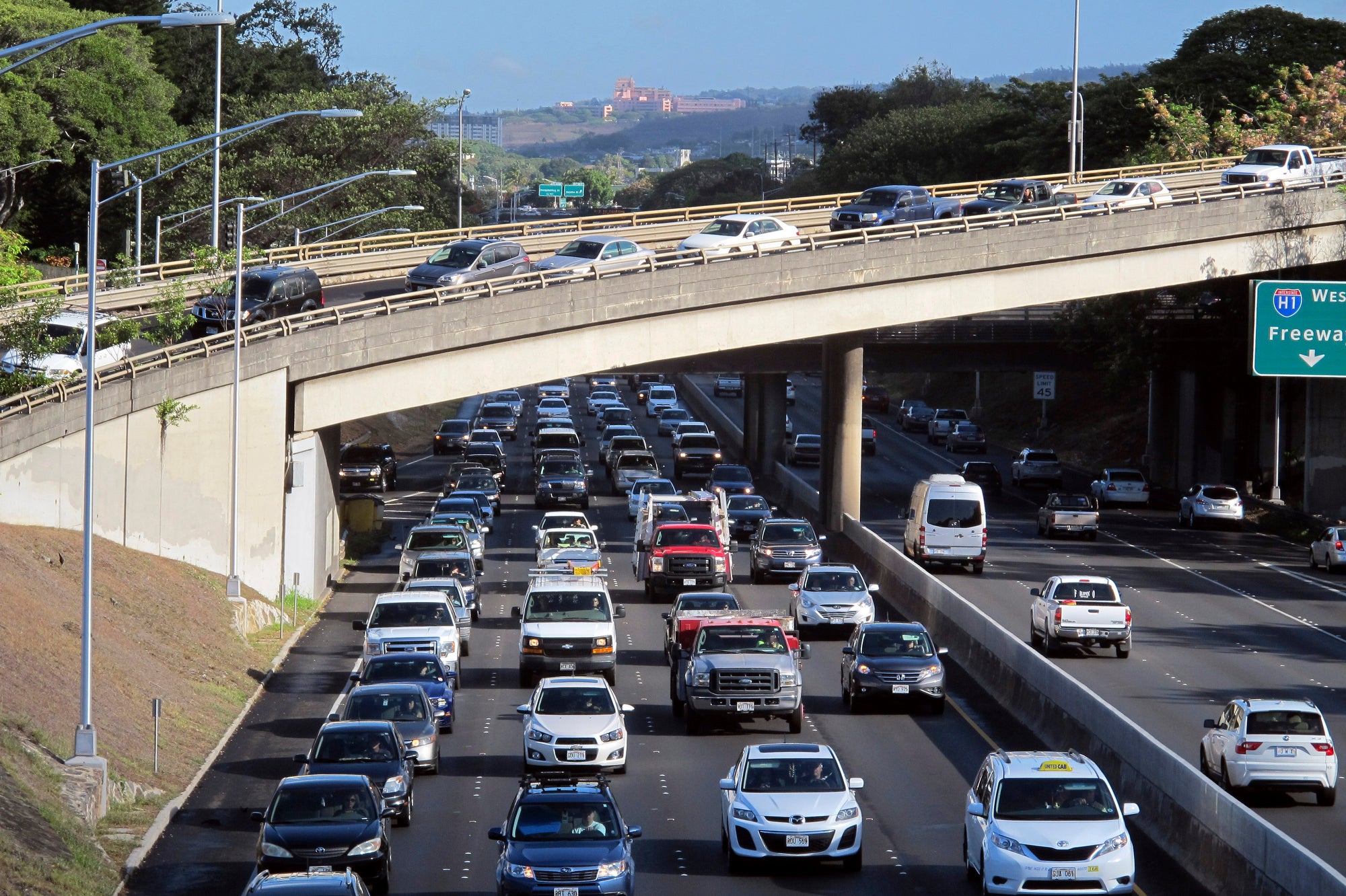
Hawaiʻi’s kuleana (responsibility) to protect public trust resources for future generations and its commitment to address climate change, coupled with the persistent problem that it remains the most petroleum-dependent state in the nation, underscores why these 14 youth have turned to the court: they need help protecting their rights and it’s the job of the courts to do so.
Elyse Butler for Earthjustice
Earthjustice and Our Children’s Trust are representing these youth plaintiffs to ensure that their constitutional rights and their futures are defended from the worst of climate change and those who are both actively making it worse and failing to do everything in their power to avert this crisis. Earthjustice’s involvement in this lawsuit is part of our broader fight against the fossil fuel industry.
Established in 1988, Earthjustice's Mid-Pacific Office, located in Honolulu, Hawaiʻi, works on a broad range of environmental and community health issues, including to ensure water is a public trust and to achieve a cleaner energy future.